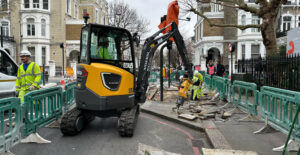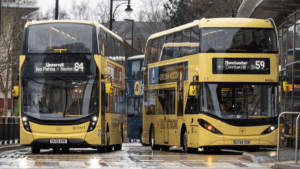It took 30 years and >$1 billion to protect a minority of high-end car owners from breathing bad air while driving. Now all of us could get the same health feature for a fraction of the cost.
Air pollutants on the road are not going away anytime soon, despite the electrification trend in light duty vehicles. Although we are exposed to the worst pollution in our cars, in-cabin air quality is not yet regulated. Some actions have been taken over the years to improve the situation. For example, on-board Air Quality Sensors (AQS) have been used for 30 years on high-end cars to control the air intake. Over 1 billion dollars has been spent on this feature but more than 90% car users still do not have it.
A recent multi city study compared the in-cabin air quality improvements achieved with AQS to those achieved using real-time air quality maps. The results are striking: the new map-based method outperforms the standard AQS-based method.
The discovery opens the door to implementing this feature, which can improve health, on any car without being limited by the AQS cost.
The feature can be implemented on non-connected cars as well, by using a smartphone app connected to the vehicle via Bluetooth. The smartphone gets real-time updates from the map cloud server and issues flap position recommendations to the vehicle. Similarly to Google maps anticipating traffic speed, the new solution anticipates pollution ahead of the vehicle, causing the air intake flap to be closed to keep the most polluted air out. Since the path of the car is often not known in advance, a predictive path algorithm was developed for the study. It identifies the most likely path of a car at any time, based on its location and direction.
The study showed average in-cabin pollution reductions between 35% and 60% depending on road conditions and blower fan speed.
The high-resolution air quality maps were created by collecting AQS data from about 50 vehicles in each city for over a year. The data collection cost was only a fraction of usual costs for other air quality mapping endeavors.
It is estimated that data from less than 0.02% cars in traffic would be sufficient to map air quality with the required spatiotemporal resolution in all developed cities.
Only about 50k cars with on-board AQS would be required for the USA, or for the largest 6 European countries together. The method is therefore scalable worldwide at realistic cost. Worldwide mapping could be achieved by a single car manufacturer or by one of the ride-hailing companies, and could benefit hundreds of millions car users.
This new advanced car feature will contribute to reducing the health consequences of high urban traffic pollution, resulting in meaningful societal benefits for a minimal investment.
For more information, please contact Herve Borrel at herveborrel@airlib.co or visit www.airlib.co
Photos supplied by www.airlib.co

















Leave a Reply